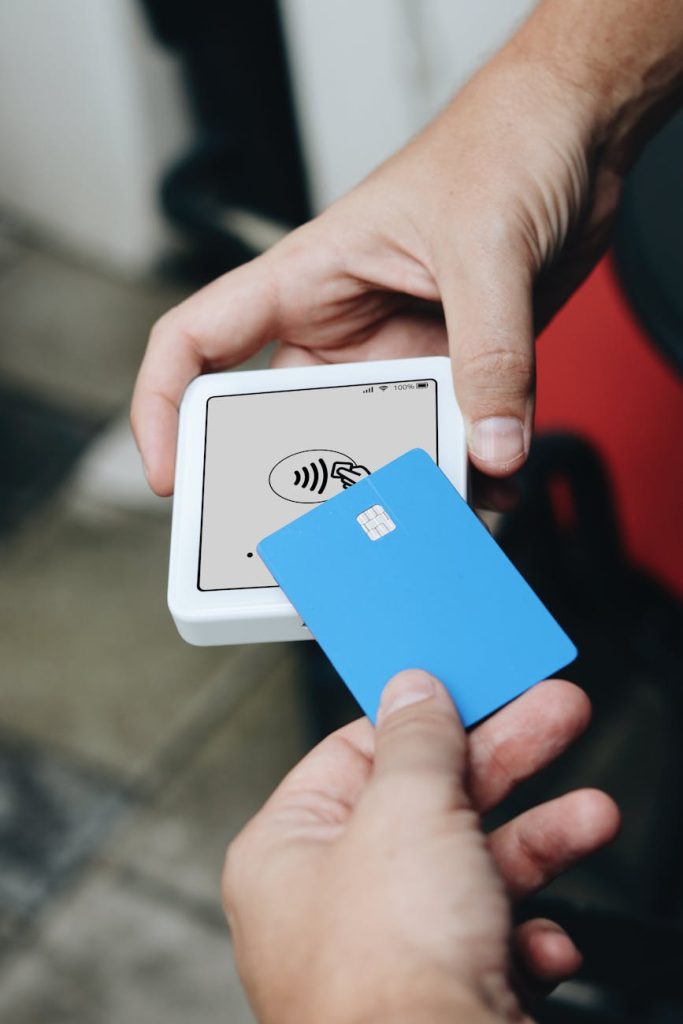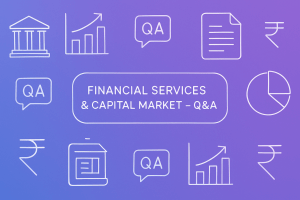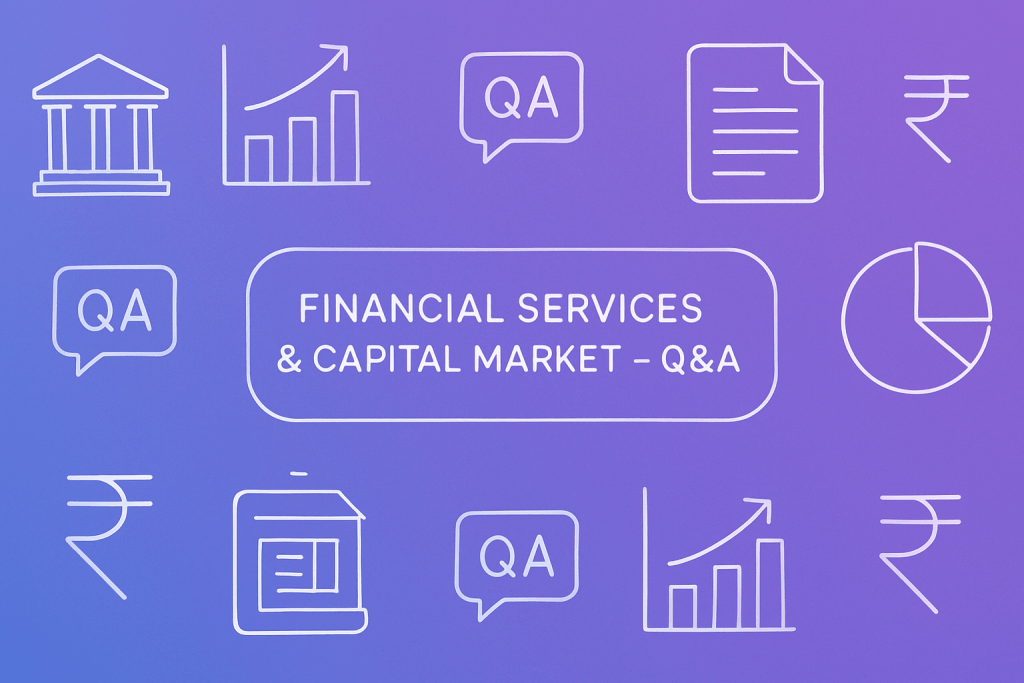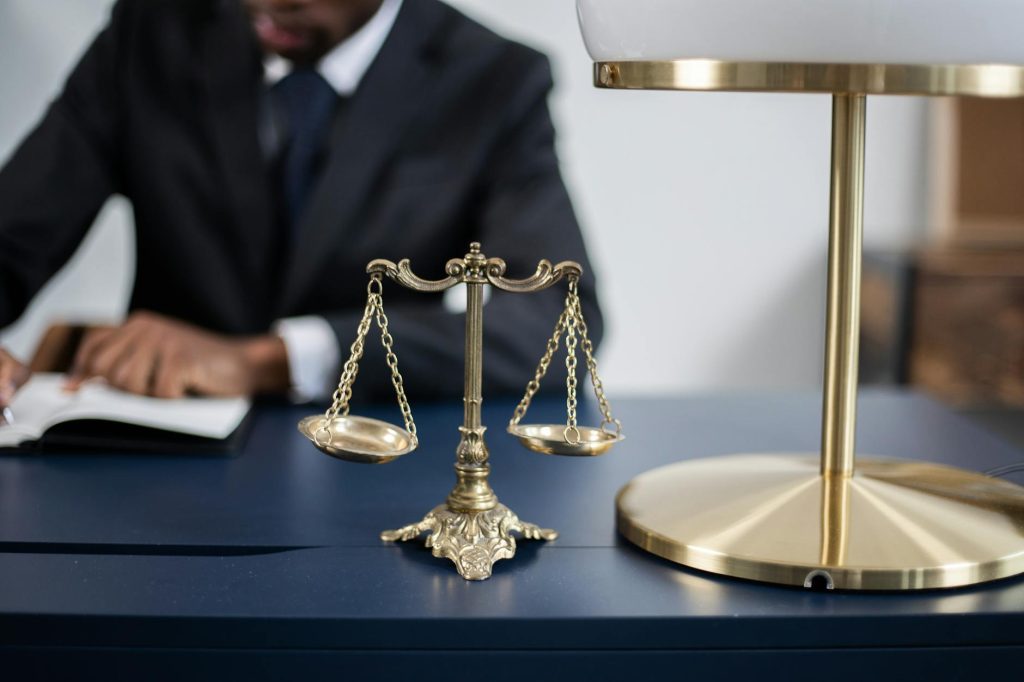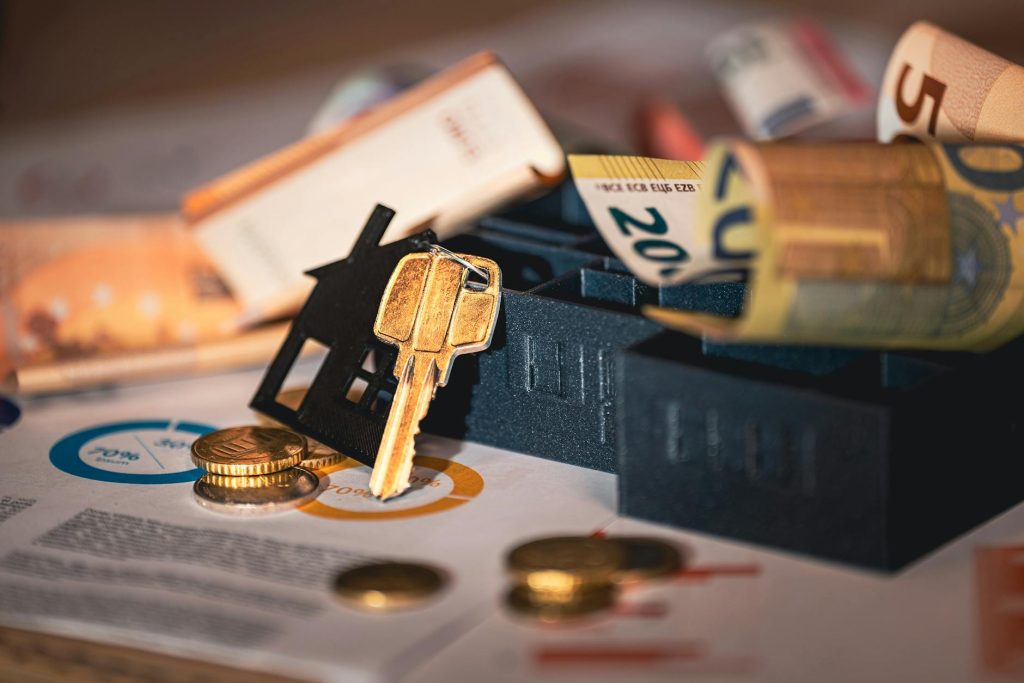SET C : Paper 9 – Financial Services and Capital Markets SPOM Exam Asked question for your practice . Credit – CA Nand Jha
- In the derivatives market, the value of a contract is based on the price of an asset, which is
referred to as the:
(a) Futures
(b) Forwards
(c) Options
(d) Underlying (Ans) - Which of the following is not considered a function of financial markets?
(a) Allocating savings into productive investments
(b) Determining the valuation of securities
(c) Increasing risk and liquidity of financial assets(Ans)
(d) Reducing transaction costs - Who is the main stakeholder in a financial market?
(a) Brokers
(b) Underwriters
(c) Merchant Bankers
(d) Companies(Ans) - Which entity earns profits from the price difference between the pre-IPO purchase and the
public offering price?
(a) Merchant Bankers
(b) Custodians
(c) Brokers
(d) Underwriters(Ans) - Which organization acts as a self-regulatory body for the bond, money, and derivatives
markets?
(a) FEDAI (Foreign Exchange Dealers’ Association of India)
(b) AIBI (Association of Investment Bankers of India
(c) AMFI (Association of Mutual Funds in India)
(d) FIMMDA (Fixed Income Money Market and Derivatives Association of India(Ans) - Why are SPACs commonly referred to as blank cheque companies?
(a) Because investors must provide blank cheques to the companies, they invest in.
(b) Because investors do not know the acquisition targets in advance.(Ans)
(c) Because investors have complete knowledge of the acquisition targets.
(d) Because investors have partial knowledge of the acquisition targets. - Which of the following statements is accurate regarding SPACs?
(a) A shell company generally has a strong history of profitability.
(b) India’s M&A activities are significantly superior to those in developed countries.
(c) The sponsor must identify an acquisition target within two years and complete the
purchase.(Ans)
(d) SPACs are an investment model exclusive to the United States. - What is the primary purpose of the Green Shoe Option?
(a) To determine a fair market value.
(b) To stabilize stock prices and allow over-allotment of shares.(Ans)
(c) To increase IPO valuations artificially.
(d) To facilitate book building. - Reverse Book Building is mainly utilized for:
(a) Initial Public Offerings (IPOs).
(b) Further Public Offerings (FPOs).
(c) The process of delisting a company.(Ans)
(d) Securing investments from anchor investors. - If the price band is adjusted during a book-building issue, the bidding period can be
extended by a maximum of:
(a) 7 working days.
(b) 10 working days.(Ans)
(c) 12 working days.
(d) 15 working days. - What is the minimum investment required for an anchor investor in a public issue?
(a) ₹10 crores(Ans)
(b) ₹15 crores
(c) ₹20 crores
(d) ₹25 crores - In an IPO, what portion of the anchor investor allocation is reserved for domestic
mutual funds?
(a) 50%
(b) 33.33%.(Ans)
(c) 25%
(d) 20%
guarantees financial settlement. - Which of the following does not qualify as a risk management practice in the
secondary market?
(a) Establishing trading rules and regulations for broker members.
(b) Implementing market surveillance to control excessive volatility.
(c) Setting up a trade/settlement guarantee fund to ensure timely settlement in case of default.
(d) Creating a clearing corporation that settles transactions and a depository that only
guarantees financial settlement.(Ans) - What term describes the process of separating the ownership and control of a stock
exchange from the trading rights of its members?
(a) Indexation
(b) Demutualization(Ans)
(c) Trading Mechanism
(d) Governing Board - Which of the following is not considered a risk management tool in the secondary
market?
(a) Circuit Breaker
(b) Rolling Settlement
(c) Reverse Book Building(Ans)
(d) Market Making System - If a security is lent at ₹500, and its transaction prices are (i) ₹500.50 and (ii) ₹499.75,
what are the lender’s earnings as fee and the borrower’s rebate earnings?
(a) 0.50; 0.25(Ans)
(b) 0.25; 0.50
(c) 0.50; 0.50
(d) 0.25; 0.25 - A security has a Securities Lending Price (SLP) of ₹100, and its transaction price
(TP) is ₹100.35. If the borrowing period is 10 days, what is the annualized yield?
(a) 15%
(b) 12.78%(Ans)
(c) 18.25%
(d) 16% - Stocks that _ have _ margin requirements.
(a) Are highly liquid; higher
(b) Have low liquidity; higher(Ans)
(c) Are highly liquid; no
(d) Have low liquidity; lower - If a T+1 settlement cycle is implemented; which risk will be reduced for both
clearing corporations and foreign portfolio investors?
(a) Credit Risk
(b) Liquidity Risk
(c) Counterparty Risk(Ans)
(d) Market Risk - What is the effect of reducing the borrowing amount for T-bills on their supply?
(a) Increase in supply
(b) Decrease in supply(Ans)
(c) Increase in demand
(d) Decrease in demand - A Certificate of Deposit (CD) has a face value of ₹5000 and a 6-month maturity
period, with a 10% discount rate. What is the issue price of the CD?
(a) 4500
(b) 5250
(c) 4750(Ans)
(d) 5500 - Based on the previous question, what is the effective rate of interest on the CD?
(a) 10%(Ans)
(b) 11.2%
(c) 5%
(d) 18% - What term refers to the market for loans with extremely short durations, ranging
from 1 day to 14 days?
(a) Treasury Bill
(b) Call or Notice Money(Ans)
(c) Repos
(d) Commercial Papers - Which of the following is an unsecured promissory note?
(a) Treasury Bill
(b) Commercial Paper(Ans)
(c) Commercial Bill
(d) Repos - The maximum duration for transactions in the call money market is:
(a) 7 days
(b) 14 days(Ans)
(c) 21 days
(d) 30 days - A depositor places ₹1,00,000 in a bank. According to the current RBI regulations,
how much must the bank keep as Cash Reserve Ratio?
(a) 4500(Ans)
(b) 5000
(c) 4000
(d) 6000 - What are the respective names of bonds issued by the central government, state
government, and corporate entities?
(a) State Bond, Sovereign Bond, Corporate Bond
(b) National Bond, Sovereign Bond, Corporate Bond
(c) Sovereign Bond, State Bond, Corporate Bond(Ans)
(d) None of the above - If a bond’s required yield drops below its coupon rate, how will it be traded?
(a) At par
(b) At a discount
(c) At a premium(Ans)
(d) None of the above - Which type of financial instrument carries the least default risk?
(a) Treasury bills(Ans)
(b) Government bonds
(c) ICICI bonds
(d) SBI bonds - Identify the incorrect statement regarding bond investments:
(a) The longer the maturity period, the less sensitive the bond price is to changes in market
interest rates.(Ans)
(b) Bond values and interest rates share a non-linear, inverse relationship.
(c) Bonds with higher coupon rates tend to be less sensitive to interest rate fluctuations.
(d) If market interest rates exceed the bond’s coupon rate, the bond trades at a discount. - Why are corporate bonds less liquid than money market instruments and corporate
equities?
(a) They are long-term securities, which are riskier and less marketable.(Ans)
(b) Corporate bonds are as marketable as money market instruments and equities.
(c) Money market instruments have smaller denominations.
(d) Corporate bonds are not tax-exempt. - In which market are new bonds and stocks first issued and sold to investors?
(a) Primary market(Ans)
(b) Secondary market
(c) Auction market
(d) Stock exchange - Government securities with maturities exceeding one year are known as:
(a) Government bonds(Ans)
(b) Treasury bills
(c) Bill of exchange
(d) Commercial papers - The call-option value of a callable bond is higher when:
(a) Interest rates are low and expected to stay low
(b) Interest rates are high and expected to remain high
(c) Interest rates are highly volatile(Ans)
(d) Markets are inefficient - Which financial concept measures a bond’s sensitivity to interest rate fluctuations?
(a) Duration(Ans)
(b) Yield to Maturity (YTM)
(c) Current yield
(d) None of the above - Primary Dealers primarily trade in which type of financial instrument?
(a) Bonds
(b) Mutual Funds
(c) Government securities(Ans)
(d) Debentures - What is another term for an irredeemable bond?
(a) Fully convertible bond
(b) Perpetual bond(Ans)
(c) Partially convertible bond
(d) None of the above - Floating rate bonds have:
(a) Fixed interest rates
(b) Variable interest rates(Ans)
(c) Zero interest rates
(d) None of the above - When risk perception is high, investors prefer bonds with:
(a) Higher interest rates
(b) Lower interest rates(Ans)
(c) Par value
(d) None of the above - Investors generally demand what kind of returns for bonds with longer maturities?
(a) Lower returns
(b) Higher returns(Ans)
(c) Zero returns
(d) None of the above - The fixed interest rate stated on a bond at issuance is called:
(a) Bond rate
(b) Repo rate
(c) Coupon rate(Ans)
(d) All of the above - What does marketability risk of a bond refer to?
(a) Market-wide risks affecting all bonds
(b) Variation in return caused by challenges in selling stocks(Ans)
(c) The failure of an issuer to meet payment obligations
(d) Both (a) and (c) - A bond issued at a discount and redeemed before maturity is called:
(a) Mortgage bond
(b) Zero-coupon bond(Ans)
(c) Convertible bond
(d) All of the above - What is a bond that can be redeemed before its maturity called?
(a) Callable bond(Ans)
(b) Option bond
(c) Step-up bond
(d) Non-callable bond - What does bond duration measure in relation to interest rate changes?
(a) Sensitivity of the yield
(b) Sensitivity of the yield to maturity
(c) Sensitivity of the full bond price(Ans)
(d) Sensitivity of convexity - If private sector-issued bonds are cancelled, what does it indicate?
(a) Markets expect higher yields due to reduced private sector fundraising.(Ans)
(b) Markets expect lower yields due to reduced private sector fundraising.
(c) Markets expect lower yields as private sector fundraising increases.
(d) None of the above. - If RBI increases interest rates, how does it affect bond prices for existing bonds
offering similar returns?
(a) Prices drop as coupon payments become less attractive, leading investors to seek new
bonds with higher risk-free returns.(Ans)
(b) Prices rise as coupon payments become more attractive, leading investors to seek new
bonds with lower risk-free returns.
(c) Prices fall as coupon payments become less attractive, leading investors to seek new
bonds with lower risk-free returns.
(d) Prices rise as coupon payments become more attractive, leading investors to seek new
bonds with higher risk-free returns. - An option is considered out-of-the-money when it has:
(a) A negative intrinsic value
(b) A positive intrinsic value
(c) Zero intrinsic value(Ans)
(d) None of the above - Who holds the right to purchase the underlying asset at a predetermined price?
(a) Buyer of a Call option(Ans)
(b) Seller of a Call option
(c) Buyer of a Put option
(d) Seller of a Put option - You have taken a short position in Gail Ltd. futures at ₹880 (with a lot size of 500)
and aim for a profit of ₹10,000. At what price must Gail trade for you to achieve this
profit?
(a) ₹860(Ans)
(b) ₹890
(c) ₹870
(d) ₹900 - A stock is currently priced at ₹370, and its Call option with a strike price of ₹360 is
trading at a premium of ₹21. What is the option’s time value?
(a) 21(Ans)
(b) 10
(c) 11
(d) 31 - Which statement accurately describes the risk profile of an option buyer?
(a) The buyer of an option faces unlimited losses.
(b) The buyer of an option has limited loss potential.(Ans)
(c) The seller of an option faces limited loss potential.
(d) The seller of an option enjoys unlimited profit potential. - Identify the false statement regarding options:
(a) The buyer of an option pays the premium.
(b) The buyer of an option has the right, but not the obligation, to exercise it.
(c) The seller of an option can incur unlimited losses.
(d) The seller of an option can earn unlimited profit.(Ans) - If you sell a XYZ futures contract (lot size 50) at 5600 and repurchase it at 5700,
what is your profit or loss?
(a) Loss of ₹10,000
(b) Loss of ₹5,000(Ans)
(c) Gain of ₹10,000
(d) Gain of ₹5,000 - When a stock is trading at ₹570, how would you classify a Call option with a strike
price of ₹560?
(a) In-the-Money(Ans)
(b) Out-of-the-Money
(c) At-the-Money
(d) Deep out-of-the-Money - Which of the following is not an advantage provided by a depository system?
(a) It helps eliminate the risk of bad deliveries of securities.
(b) The settlement cycle is faster, now operating on a T+2 basis.
(c) It enables immediate transfer and registration of securities.
(d) The interest rates on loans against pledged demat shares are higher compared to those on
physical shares.(Ans) - Which exchange is renowned for its rapid growth, high liquidity, market depth, and
state-of-the-art, forward-looking technologies?
(a) National Stock Exchange
(b) London Stock Exchange
(c) Nasdaq(Ans)
(d) New York Stock Exchange - Who is responsible for collecting investor applications and maintaining an accurate
record of the funds received and paid?
(a) Merchant Bankers
(b) Registrars to an issue and Share Transfer Agents(Ans)
(c) Underwriters
(d) Bankers to an issue - Which investment vehicle allows for periodic withdrawals from the invested funds?
(a) Hedge Funds
(b) Endowment Funds(Ans)
(c) Pension Funds
(d) Mutual Funds - Which of the following services is not typically offered by custodians?
(a) Maintaining clients’ securities accounts
(b) Collecting benefits or rights accruing from the securities
(c) Minimizing credit risk by acting as the counterparty to all trades(Ans)
(d) Keeping clients informed about actions taken by the issuer of securities - Which of the following is NOT considered a function of commodity markets?
(a) Providing a platform for farm produce growers and end buyers to interact.
(b) Allowing intermediaries to represent both supply and demand in the commodity chain.
(c) Facilitating price discovery.
(d) Enabling speculation-driven trades and short selling aimed at short-term gains.(Ans) - Agridex, launched on 25 May 2020, features 10 liquid commodities on which
exchange?
(a) National Commodity and Derivatives Exchange(Ans)
(b) Multi Commodity Exchange of India
(c) Indian Commodity Exchange
(d) ACE Derivatives & Commodity Exchange Limited - Which of the following is NOT a problem facing the Indian commodity markets?
(a) The markets have not experienced the ‘exponential’ growth needed for platform
sustainability.(Ans)
(b) Farmers, the backbone of agricultural commodities, struggle to connect with the market.
(c) MCX and NCDEX have implemented numerous awareness programs.
(d) Political influences have disrupted platforms for price-sensitive commodities like sugar. - What is a necessary prerequisite for futures trading on a commodity exchange?
(a) Complexity
(b) Higher cost
(c) Homogeneity(Ans)
(d) Physical delivery - Which exchange offers a comprehensive range of trades including ferrous, non
ferrous metals, precious metals, as well as weather and real estate derivatives?
(a) London Metal Exchange
(b) Chicago Mercantile Exchange(Ans)
(c) Eurex Exchange
(d) National Stock Exchange of India Limited - Which type of mutual fund allows investors to subscribe and redeem units at any
time during the scheme’s life, with new investors able to join by directly applying to the
fund?
(a) Balanced Funds
(b) Liquid Funds
(c) Closed Ended Funds
(d) Open Ended Funds(Ans) - Mr. Rahul, a 25-year-old who has just started working at a reputed steel company
and aims to build wealth over the long term, should consider investing in which
category of mutual funds?
(a) Debt Funds
(b) Liquid Funds
(c) Equity Funds(Ans)
(d) Gold ETFs - A mutual fund has total assets valued at ₹15 crore and total liabilities of ₹3 crore,
with 1 crore units outstanding. What is the Net Asset Value (NAV) per unit?
(a) ₹17
(b) ₹10
(c) ₹12(Ans)
(d) ₹15 - Which type of mutual fund is generally considered the most volatile?
(a) Large-cap Funds
(b) Mid-cap Funds
(c) Small-cap Funds(Ans)
(d) Hybrid Funds - Who plays a crucial role as the intermediary between fund managers and investors
in a mutual fund setup?
(a) Trustees(Ans)
(b) Asset Management Companies
(c) Custodians
(d) Registrars and Transfer Agents - How would you best define an open-ended mutual fund?
(a) A fund that can invest in any type of security
(b) A fund that continuously offers units for sale and repurchase(Ans)
(c) A fund that imposes an upper limit on its NAV
(d) A fund with a fixed size - What is the name of the investment strategy in which an investor commits to
investing a fixed amount at regular intervals in a mutual fund?
(a) Systematic Transfer Plan
(b) Systematic Withdrawal Plan
(c) Systematic Investment Plan(Ans)
(d) Systematic Innovative Plan - Which of the following is NOT a commonly used metric for evaluating the
performance of mutual funds?
(a) Sharpe Ratio
(b) Treynor Ratio
(c) Liquidity Ratio(Ans)
(d) Sortino Ratio - Regarding rolling returns, which statement is accurate?
(a) It simply annualizes the growth of the NAV from the initial investment date to today.
(b) It measures the return from the start date to the next period, then from that period to the
following one, and averages these returns.
(c) It calculates returns weekly, averaging the gains from each consecutive week.
(d) All of the above.(Ans) - If an equity fund is redeemed at ₹20 per unit and carries an exit load of 2.50%, what
must be the fund’s NAV before the exit load is deducted?
(a) ₹19.50
(b) ₹20.50(Ans)
(c) ₹19.975
(d) ₹20.00 - What is another term for a front-end load in mutual funds?
(a) Entry Load(Ans)
(b) Exit Load
(c) Both Entry and Exit Load
(d) Trail Commission - Private equity raises funds from which of the following sources?
(a) Initial Public Offer
(b) Mutual funds, HNIs, Insurance, etc.(Ans)
(c) Taxpayers’ money
(d) Follow-on Public Offer - Once a private equity investment is initiated, what typically occurs?
(a) The exit happens when the lifecycle or term sheet is complete.
(b) An expert is appointed to the board of directors.
(c) Further series funding is not permitted.
(d) Both (a) and (b) are correct.(Ans) - The acquisition of a stake in a target company predominantly financed by
borrowing is known as:
(a) Management Buyout
(b) Leveraged Buyout(Ans)
(c) Management Buy-in
(d) Leveraged Buy-in - Private equity investments are characterized by investments in businesses and the
issuance of shares under circumstances other than which of the following?
(a) Initial Public Offer
(b) Follow-on Public Offer
(c) Private issuance of shares
(d) Both (a) and (b)(Ans) - In conducting financial due diligence, which of the following factors might a private
equity firm choose not to consider before investing?
(a) Off-balance sheet financial instruments
(b) Weakening trends in working capital
(c) Reliance on dominant suppliers or a concentrated customer base(Ans)
(d) Accounting adjustments that obscure actual performance - Which of the following is NOT considered a disadvantage of using an IPO as an exit
strategy for private equity?
(a) Market-related risks associated with going public
(b) The requirement by strategics to acquire a majority stake(Ans)
(c) Lock-up provisions
(d) Uncertainty of returns - Which of the following services is NOT typically offered by a merchant banker?
(a) Assisting with mergers and acquisitions
(b) Trading in shares
(c) Custodian services(Ans)
(d) Underwriting - From a revenue-generation perspective, which service is most critical for a merchant
banker?
(a) Mergers and acquisitions advisory(Ans)
(b) Trading in shares
(c) Underwriting
(d) Asset management service - Which responsibility does NOT fall under the role of a merchant banker?
(a) Documentation
(b) Compliance
(c) Reporting
(d) Allotment of securities(Ans) - If you plan to raise funds from the public, whose services are generally utilized?
(a) Commercial banks
(b) Investment banks(Ans)
(c) Central banks
(d) Payment banks - Which of the following companies is primarily involved in rating individuals?
(a) ICRA
(b) CRISIL
(c) ONICRA(Ans)
(d) CARE - What is the term for the rate that reflects the percentage change in a company’s or
instrument’s ratings over a specified period?
(a) Transition rate(Ans)
(b) Default rate
(c) Recovery rate
(d) Negative rate - In the CAMELS framework used for credit rating, which of the following is NOT
considered a separate parameter?
(a) Capital adequacy
(b) Financial performance
(c) Sensitivity(Ans)
(d) Management - Credit rating services are likely to be of the least benefit to which of the following
groups?
(a) Lenders
(b) Borrowers
(c) Customers(Ans)
(d) Government - Credit rating is not defined as being which of the following?
(a) An important input for making investment decisions
(b) Dynamic
(c) A safeguard against default(Ans)
(d) Something assigned to debt instruments - Which of the following is NOT considered a problem associated with credit rating
agencies in India?
(a) Conflict of interest
(b) More competition(Ans)
(c) Poor rating quality
(d) Independence of the ratings committee - Which of the following is suggested as a solution to address the challenges faced by
credit rating agencies?
(a) Persistence of conflict of interest
(b) Introduction of more players(Ans)
(c) Non-rotation of credit rating agencies
(d) Investor unawareness - When evaluating a leasing decision from the lessee’s perspective, what does the term
“Net Advantage of Lease” refer to?
(a) The present value of the cost of owning
(b) The present value of leasing costs minus the present value of owning costs
(c) The present value of owning costs minus the present value of leasing costs(Ans)
(d) None of the above - In which situation should a lessee prefer leasing?
(a) When the net advantage of leasing is positive(Ans)
(b) When the net advantage of leasing is negative
(c) When the internal rate of return on leasing exceeds the post-tax cost of debt
(d) Both (a) and (c) - An arrangement gives a company the right to control the use of land for 99 years,
after which the land reverts to the government in its original condition. In return, the
government demands a payment equal to the land’s current fair value. This
arrangement is classified as:
(a) Operating lease
(b) Finance lease(Ans)
(c) Sale and leaseback
(d) Not a lease, but a purchase transaction - A company leases an aircraft for 20 years by making an upfront payment of ₹100
crores. The lease agreement also includes a clause that if the aircraft fails, it will be
substituted at no extra cost, and the aircraft company provides the pilot along with free
maintenance and services. This arrangement is best described as:
(a) Operating lease – with an expense of ₹5 crores per year being charged(Ans)
(b) Finance lease – with a Right-of-Use asset recognized at ₹100 crores and depreciation of
₹5 crores per year
(c) Outright purchase of the aircraft
(d) None of the above - A lessor evaluates a leasing decision based on which of the following criteria?
(a) The computed internal rate of return (IRR) from leasing exceeds the weighted average
cost of capital (WACC)
(b) Lease rentals are higher than the break-even rental level
(c) The net present value (NPV) of the lease is negative
(d) Both (a) and (b)(Ans) - Under which method does a lessor partner with a seller to market the seller’s
product through its own leasing operations?
(a) Operating lease
(b) Financial lease
(c) Sale and leaseback
(d) Sales-Aid-Lease(Ans) - From a lessee’s perspective, which evaluation method separates the financial and
tax components of lease financing?
(a) Present value analysis
(b) Internal rate of return analysis
(c) Bower-Herringer-Williamson Method(Ans)
(d) None of the above - Which of the following is NOT considered a type of factoring?
(a) Bill discounting(Ans)
(b) Selling a trade receivable on a recourse basis
(c) Selling a trade receivable on a non-recourse basis
(d) Arranging working capital by selling trade receivables - Which of the following statements is false?
(a) The factor purchases the entire trade receivable and pays 100% of the invoice amount
upfront.(Ans)
(b) The factor buys trade receivables from the client.
(c) The client holds a trade receivable from the customer.
(d) The factor disburses funds to the client after acquiring the trade receivables.. - In non-recourse factoring, who bears the credit risk associated with non
recoverability?
(a) The client
(b) The factor(Ans)
(c) The customer
(d) The bank - Which of the following characteristics does NOT serve to differentiate forfaiting
from factoring?
(a) Financing
(b) Credit worthiness
(c) Legal administration of dues
(d) Financing of receivables(Ans) - Which factors, specific to the Indian context, currently pose challenges to the
factoring market?
(a) Lack of a credit appraisal system
(b) Stamp duty imposed on factoring transactions
(c) Both (a) and (b)(Ans)
(d) Short-term financing deals - Which type of factoring is commonly referred to as “Old Line Factoring”?
(a) Recourse Factoring
(b) Non-Recourse Factoring
(c) Full Factoring(Ans)
(d) Cross Border Factoring - Identify the incorrect statement regarding forfaiting and factoring:
(a) A forfeiter discounts the full value of the note or bill, while in a factoring arrangement,
financing typically covers 75%–80% of the receivables.
(b) A forfeiter’s decision to provide financing depends on the financial standing of the
availing bank, whereas in factoring, the export factor bases the credit decision on the
exporter’s credit quality.
(c) Factoring is a pure financial arrangement, whereas forfaiting includes ledger
administration and collections.(Ans)
(d) Factoring is generally a short-term financial deal, while forfaiting extends over 3–5 years. - Which form of factoring is known as the “Two Factor System”?
(a) Recourse Factoring
(b) Non-Recourse Factoring
(c) Full Factoring
(d) Cross Border Factoring(Ans) - Who is tasked with ensuring adherence to securities laws and addressing investor
grievances?
(a) Lead Manager
(b) Compliance Officer(Ans)
(c) Syndicate Member
(d) Registrar to the Issue - In appointing lead managers, which safeguard is implied to protect investors and
ensure legal compliance?
(a) The lead manager must be an associate of the issuer.
(b) The lead manager’s rights and obligations are not predetermined.
(c) Agreements may contain clauses without capping liabilities.(Ans)
(d) None of the above. - What is the primary responsibility of a compliance officer in the context of
securities issuance?
(a) Marketing the issue
(b) Ensuring the issuer’s profitability
(c) Monitoring compliance with securities laws and addressing investor grievances(Ans)
(d) Managing post-issue activities - For a listed entity using an in-house share transfer facility, at what threshold of
total shareholders must it register with the Board as a Category II share transfer agent
or appoint a Registrar to an Issue and Share Transfer Agent?
(a) When the total number of holders exceeds 50,000
(b) When the total number of holders exceeds 75,000
(c) When the total number of holders exceeds 100,000(Ans)
(d) When the total number of holders exceeds 150,000 - According to Regulation 18, how frequently should the Audit Committee of a listed
entity meet?
(a) Twice a year
(b) Three times a year
(c) Four times a year(Ans)
(d) Once a year - Under Regulation 19, who is eligible to serve as the Chairperson of the Nomination
and Remuneration Committee?
(a) Executive Director
(b) Independent Director(Ans)
(c) Any Director
(d) CEO of the Company - As defined in the SEBI (Substantial Acquisitions of Shares and Takeover)
Regulations, 2011, what does the term “Acquisition” refer to?
(a) Direct or indirect acquisition of shares or voting rights(Ans)
(b) Transfer of control over a target company
(c) Purchase of frequently traded shares
(d) Acquisition of securities on the Innovators Growth Platform - What is the significance of the “Identified Date” in these regulations?
(a) The date of the public announcement
(b) The date when the tendering period begins
(c) The date used to determine the list of shareholders for sending the letter of offer(Ans)
(d) The date on which control over a target company is acquired - According to Regulation 3, what event triggers the obligation to make a mandatory
open offer?
(a) Acquisition of 25% or more of the voting rights in a target company(Ans)
(b) Acquisition of 20% or more of shares in a target company
(c) Acquisition of control over a frequently traded company
(d) Acquisition pursuant to a resolution plan under the Insolvency and Bankruptcy Code - What is the maximum limit for a buy-back of shares or specified securities based
on standalone financial statements?
(a) 20%
(b) 25%(Ans)
(c) 30%
(d) 35% - Under the SEBI Buy-back Regulations, the ratio of the company’s debt to its paid
up capital and free reserves should not exceed:
(a) 1:1
(b) 2:1(Ans)
(c) 3:1
(d) 4:1 - Which source of funds is NOT permitted for buy-back purposes according to SEBI
regulations?
(a) Securities premium account
(b) Proceeds of the current buy-back
(c) Proceeds of an earlier issue of the same kind(Ans)
(d) Free reserves - Under the SEBI (Prohibition of Insider Trading) Regulations, 2015, what is the
role of a Compliance Officer?
(a) Monitoring share prices
(b) Implementing marketing strategies
(c) Ensuring compliance with legal and regulatory requirements(Ans)
(d) Conducting financial audits - Who may be appointed as a Compliance Officer under the SEBI (PIT) Regulations,
2015?
(a) Any employee of the organization
(b) Only the Company Secretary
(c) Any person meeting the specified qualifications(Ans)
(d) External legal consultants only - Which statement regarding Trading Plans is correct?
(a) Trading may commence immediately after the public disclosure of the plan.
(b) Trading is permitted during the period surrounding the announcement of financial results.
(c) Overlapping with existing trading plans is allowed.
(d) The approved plan must be irrevocable.(Ans)

